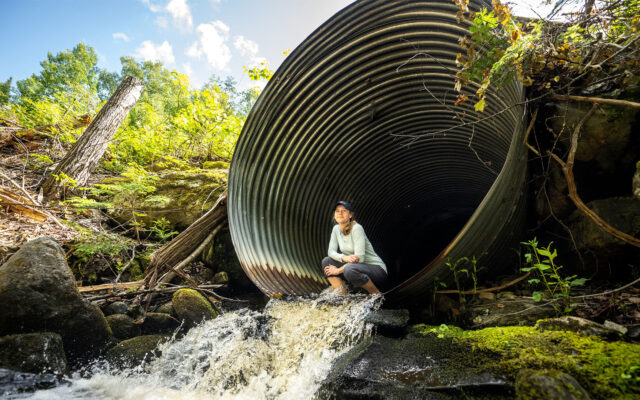
Give thanks for the forest and the ocean
By Karin R. Tilberg, president and CEO of the Forest Society of Maine
Lots of us walk or recreate in the woods, many work in the woods or in the woods products sector, and nearly all use products that derive from the woods. Yet, how often do we reflect on the significance of the 12 million acres that comprise Maine’s North Woods and recognize all the benefits that flow from these vast and unfragmented lands? The forests are home to flora and fauna, sequester and store enormous amounts of carbon, help keep water clean, are a foundation for forest and outdoor recreation economies, and are part of the essence of what characterizes Maine.
A Nov. 20 Bangor Daily News story reminds us of another beneficial relationship — between the forests and the Gulf of Maine. The BDN story reported the completion of a project to remove a 90-foot culvert and replace it with a bridge to open spawning grounds in the West Branch of the Pleasant River watershed for wild Atlantic salmon and brook trout. This change expands how far upstream Atlantic salmon can swim to spawn, extending their grounds for reproduction.
It is worth taking a moment to visualize the enormous distance the salmon must travel from the ocean where they spend part of their lives to a brook near the Katahdin Iron Works in the North Woods.
In fact, the great forests of Maine and the Gulf of Maine are intertwined in a manner that sustains life both on land and in the sea. One of the remarkable ways in which the forests and the Gulf of Maine are connected is through the water cycle. The rivers and streams that flow through the forested landscapes of Maine ultimately reach the Gulf of Maine. They carry with them essential nutrients that contribute to the health of both terrestrial and marine ecosystems.
The Gulf of Maine owes some of its ecological richness to the nutrients delivered by these freshwater sources. As rivers meander through the forests, they pick up organic matter, sediments, and nutrients, which are then transported to the gulf. This nutrient influx becomes a vital component of the marine food web. This interconnectedness extends to the diverse wildlife that live for part of their lives in both the forests and the gulf. For instance, certain bird species that inhabit the Maine forests during the breeding season migrate to the Gulf of Maine for the winter, forming a crucial link in the migratory patterns of various avian populations.
Supporting the relationship between the great forests of Maine and the Gulf of Maine is paramount for the overall health of these interconnected ecosystems. The completion of the West Branch project to extend the Atlantic salmon habitat, a collaboration between the Appalachian Trail Conservancy, Appalachian Mountain Club, and local, state, and national partners is an important step. The Forest Society of Maine has also worked to conserve stretches of the West Branch of the Pleasant River and holds a conservation easement along miles of its shoreline. As we appreciate the benefits of Maine’s forests and the richness of the gulf, let’s give thanks to the critical relationship between these two iconic natural systems and the importance of comprehensive ecological stewardship.